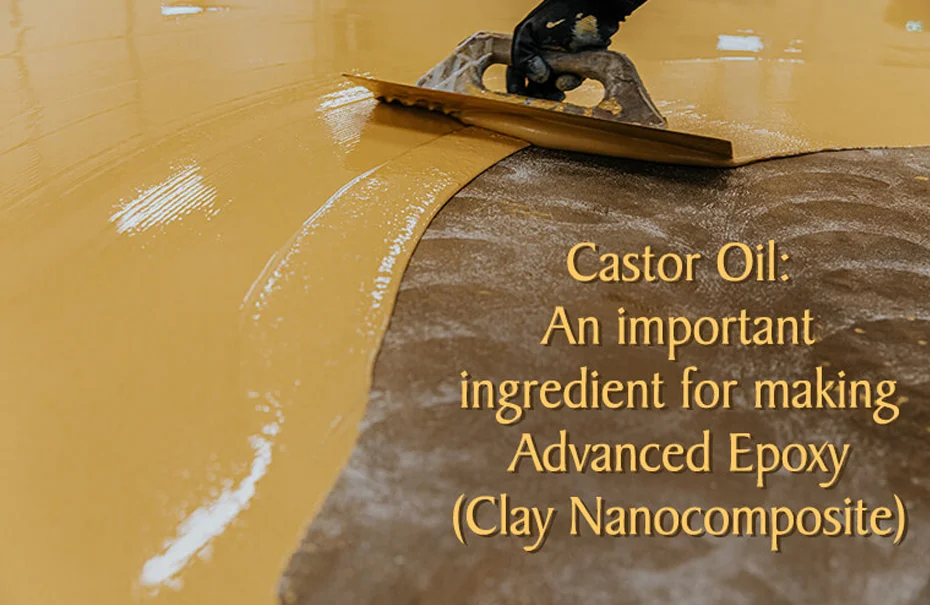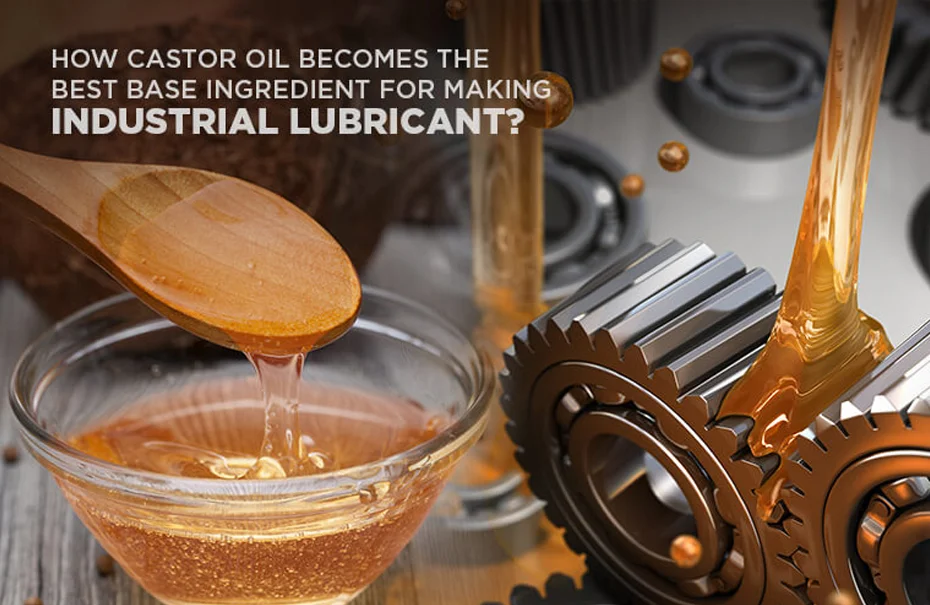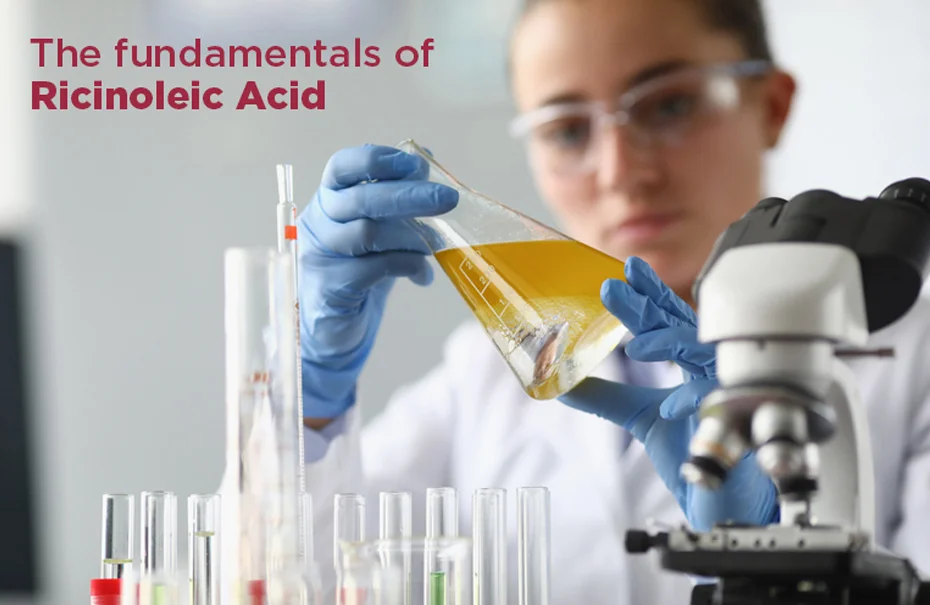Castor Oil: An Important Ingredient for Making Advanced Epoxy (Clay Nanocomposite)

Bio-based hyperbranched & linear epoxy resin is procured from the mono-glycerides of organic virgin castor oil. The nanocomposite element of the linear epoxies may also be fabricated. The structure of the resin and its nanocomposite was analyzed by NMR, FTIR, SEM, XRD, and TEM. The study of the performance (amido amine) showed improvement in scratch resistance & tensile strength. It also impacted chemical resistance and thermal stability over the pristine system. That being said, hyperbranched nanocomposites & bio-based epoxies demonstrate better performances as compared to petroleum-based products. Thus, hyperbranched epoxy (clay) nanocomposite is a potential substance meant for many advanced applications.
Initial Studies
Lately, polymer nanocomposite has emerged to be a promising-alternative to most traditional materials owing to the intrinsic-advantages like easy process-ability, reduced cost, tunable property and light weight. Nonetheless, the polymeric substances were derived from petroleum-based feedstock which remains non-renewable. In order to address these issues, bio-based renewable polymer is being developed using renewable resources for the synthesis.
In a family of thermosetting polymers, epoxy clay has gained considerable limelight in areas of coating, adhesive application and casting owing to greater mechanical strength it possesses. Also, the adhesive strength, better chemical resistance, dimensional stability and higher thermal stability add to the performance.
Why was Epoxy Derived from Polymerized Castor Oil?
Despite all the versatility, there are certain disadvantages. They are: low toughness, higher brittleness and so forth. These disadvantages restrict the utilization in certain advanced application. To add to the problems, we must talk about the global concern called biodegradability. Yes, these problems have also cropped up. Environmental concerns are compelling scientists to further explore renewable resources for production of very useful materials. In an attempt to overcome limitations, bio-based epoxy (clay) was procured from vegetable oil like castor oil. The greatest advantage of this oil is that it is readily available. It has no biodegradable issues as well. This particular characteristic provides flexibility to resins so it could find applications in industrial products like adhesives.
Experimental Studies
Nano clay was thoroughly studied. The improved characteristics are because of its layered structure & higher aspect ratio which allow better interaction between epoxies and inter-layer galleries of clay. This very property reflects in its load-tolerance ability. Hence, we can understand the varied uses of nanocomposite in industrial applications. The focus of scientists is to overcome pitfalls of conventional epoxy. So, hyperbranched epoxy is being replaced by organo-modified epoxy at various weight percentages.
Materials we need in the Experiment
- Castor oil
- Organo-modified Montmorillonite (OMMT)
- Glycerol
- Epichlorohydrin
- Biphenol (recrystallized before use)
- Sodium hydroxide
- Triethanol amine
- Calcium oxide
- and Sodium sulphate
Preparation of Monoglycerides from Castor Oil
Monoglyceride of castor-oil could be prepared at a standard lab procedure. To be precise, castor-oil (27.6 gram) CaO (0.2gram) & glycerol (5.6 gram) were mixed together. The mixing was done in a round bottomed flask that was equipped with a thermometer, a stirrer and one nitrogen inlet. The internal reaction continued for two long hours in a nitrogen environment. The temperature to be maintained was around 220 degrees centigrade. In the whole reaction, CaO was the catalyst. Thus, formation of monoglycerides was confirmed on checking solubility in methyl alcohol. At last, the monoglyceride was kept in vacuum to get it freed of moisture.
Preparing Hyperbranched Epoxy Resins
Vegetable-oil based epoxy can be extracted from castor oil on its reaction with epichlorohydrin. The reaction is called BPA reaction. The mix further reacts with triethanolamine & the obtained monoglyceride. The reaction takes place at around 110 degrees centigrade. There has to be continual stirring in the process. Triethanolamine, monoglyceride & epichlorohydrin were put together in a three-necked round-bottomed flask. The capacity of the flask was 250 ml. The flask was fitted with a water condenser. Now, this apparatus was clamped over oil-bath. By the time, the temperature reached around 80 degrees centigrade, 5N aqueous-solution was slowly added to the newly prepared mix. The mixing was done by a dropping funnel for at least 50 minutes by continuous heating. Continual heating helped reach the desired temperature (110 degrees centigrade). When the reaction stopped the mix was transferred to another funnel. The aqueous-layer was drained slowly. Now, the remnant was cleaned with distilled-water. Finally, resin was separated after removing the moisture layer. The final product, resin, was a sticky mass.
Preparing Nanocomposite
OMMT was dried out in the very first step at 60 degrees centigrade. In the second step, it was mixed with epoxy resin by continual stirring. Hyperbranched epoxy (clay) nanocomposite was procured by a manual homogeneous mixing. In this way the clay of various weight percentages was obtained. The mix was stirred continuously for three long hours. The mixing was followed by a process called ultrasonication. The amplitude was 60% and the acoustic-power density was 460 W per centimeter square. After this, poly(amido amine) was mixed to nanocomposite. The mixing was done homogeneously at room temperatures. The end product was cured at a temperature, 100 degrees centigrade.
The end result
The physical properties of nanocomposites like good chemical resistance, better mechanical and thermal resistance were evident from the test. The study was rather a simple approach to demonstrate bio-based hyperbranched epoxy (clay) that is biodegradable. Limitations and certain environmental concerns can be overcome using industrial castor oil. The pitfalls like lower toughness and brittleness can be addressed by the usage of castor oil. Morphological studies hint at interactions between OMMT & polymer chains. Overall, the thermal studies helped infer that nanocomposites are more stable as compared to pristine polymers. Industrial castor oil has umpteen uses including the procurement of clay nanocomposites.



